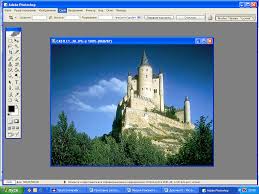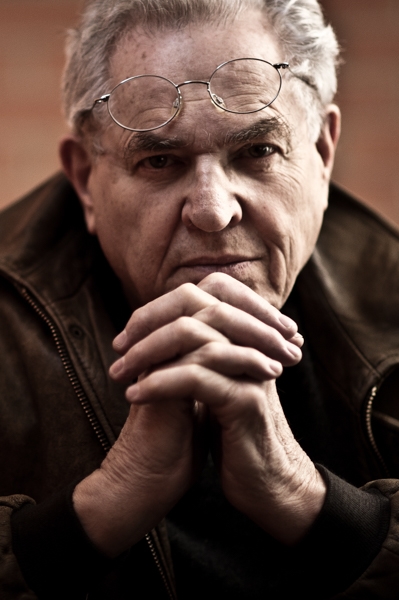Crop and fragment the image
 Image cropping is a purely photographic principle, determined by the specific features of the photocomposition, and methods of constructing a photographic space. The device’s lens more or less mechanically “cuts out” a certain sector from the unlimited space of nature. No matter how consciously and deliberately the borders of the frame and the location of the graphic elements in its field are chosen, this does not cancel the principle of fragmentation of nature. On the contrary, it is the photographer’s creative attention to the structure and boundaries of the frame that prompts him to isolate a fragment by the composition method.
Image cropping is a purely photographic principle, determined by the specific features of the photocomposition, and methods of constructing a photographic space. The device’s lens more or less mechanically “cuts out” a certain sector from the unlimited space of nature. No matter how consciously and deliberately the borders of the frame and the location of the graphic elements in its field are chosen, this does not cancel the principle of fragmentation of nature. On the contrary, it is the photographer’s creative attention to the structure and boundaries of the frame that prompts him to isolate a fragment by the composition method.
In this sense, photography is much bolder and sharper than the “traditional” fine arts, where the composition is for the most part constructed differently: as a closed ratio of fine elements, as a holistic, complete space, the edges of which are determined by its internal structure, and not by cutting off external “unnecessary” parts . This contrast between the two polar forms of spatial composition is very clearly formulated by the French movie theorist Andre Bazin, contrasting the picture with the movie screen: “The picture frame polarizes the space inward, while everything shown on the movie screen, on the contrary, tends to continue indefinitely in the Universe. The frame of the picture gives rise to centripetalism, and the screen is “centrifugal”. Note that this “centrifugality” is generated precisely by the photographic nature of the film image. The screen, a moving photograph, sharply emphasizes the incompleteness of the frame within it, but the principle of photographing itself creates this incompleteness. “The frame of a photo frame is only its conditional borders; content is related to content remaining outside the scope; his composition speaks of something incompatible – of physical being. ”
Such a distinction between the compositional principles of photography and painting does not exclude, but, on the contrary, suggests the possibility of their mutual influences. It is easy to specify examples of closed, pictorial composition in photography (especially among the early masters) or open, photographic composition – among painters (for example, Degas). However, the isolation and enlargement of a small fragment of nature, typical of photography, and approaching details to our eyes, are still not widely used in painting or easel graphics.
Fragmentation is a concentration, a concentration of gaze. The mechanical vigilance of the device exceeds human capabilities, allows you to see a lot of details in any piece of nature that elude ordinary sight. Big and small are equalized in their concrete reality, in their ability to become the subject and theme of photographic display. The artistic discovery of the inconspicuous, the experience of the beauty and significance of the countless details of being eluding our view is one of the foundations of photographic poetics.
Note that the principle of isolating the image from the vastness of the off-screen space is fully preserved in the middle and general photographic plans. Its essence is not in narrowing the field of view (this is only one of the compositional possibilities of photography), but in the fact that the edge of the image does not belong to the image world, but to the viewfinder frame, it “cuts” the nature and does not complete it. Hence the freedom of varying the frame, the ability to concentrate attention at one point or to expand the space to a circular view. The characteristic method of completing photography into a borderless book, scarcely generated by, of course, this very feeling of openness of the photographic space, its natural departure for the edge of the frame.
These features of the photographic composition have a peculiar effect, in particular, on modern methods of demonstrating pictorial originals in the book. Operating not with originals, but only with photographs of paintings, the author of a book’s layout often applies purely photographic layout methods to them, isolates fragments that are unthinkable as independent painting compositions, but expressive for the contemporary “photographed” eye.
A detailed picture allows you to show the details of the picture or the peculiarities of the author’s performing manner, indistinguishable in the picture of the work as a general plan. The ideological meaning of a large work of art is rarely perceived at first sight. A photograph of the detail makes it possible to highlight any part of the whole picture that most clearly reveals its ideological concept. By drawing the attention of the viewer to certain parts of the picture, the photographer has the opportunity to explain and interpret a work of art. This type of visual explanation of the ideological and artistic features of a work of art, often simpler and easier to understand than a verbal description, has found itself the most widespread use in art history literature of recent years
Photography art developed its own, other than in painting, aesthetic relations of the whole and its details. And here the photo anatomizes the painting, cuts it along its lines, impossible for the painting itself, builds rows of fragments, forcing to read the picture, how a modern photo series is read.




